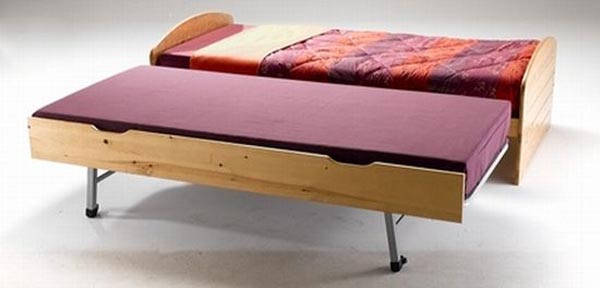The goals of constructing an eco friendly structure are normally emission reduction, temperature moderation, water and energy conservation and waste reduction. Apart from the environment conservation benefits, green buildings have shown a remarkably ambient indoor atmosphere. Low toxic levels and natural surroundings add to the improved quality of life in such residences.
Comfort comes with a price. Common problems faced by builders going green are; the steep up-front cost involved in the construction of such buildings. Environmentalists have argued that the initial investment is worth the pay-off in the form of decreased energy bills and improved health, due to natural lighting and reduced pollution. Making it affordable to go green for the common man is the hardboard, which is an important construction material used for walls, roofs and beams.
Masonite
In the 1920’s, William H Mason invented Masonite, a hardboard made by a process of disintegrating wood chips into fibers, and then applying pressure to bond the fiber without any adhesive. Masonite had a variety of uses, and one such popular use was as exterior sidings at homes. The boards were mass produced by Masonite Corporation, and became quite popular between the 1930’s and 1980’s.
The material deteriorated under harsh conditions causing rot, discoloration and blistering. During the later years, the sidings were found to be of an inferior quality as a result of improper manufacturing process, owing to which the company lost a suit by homeowners, and went bankrupt. The company restructured and bounced back as top sellers in interior and exterior doors and door components, using better and improved processes for manufacturing Masonite. The term Masonite is sometimes synonymously used with hardboard manufactured using the same process, by other manufacturers. In Europe, Masonite is known as Isorel.
How is this produced?
Recycled wood chips and sawmill waste are disintegrated to fibers by applying high steam, subjecting it to high pressure released through an orifice at atmospheric pressure. The fibers are then fused into boards with small quantities of wax or resins, and then pressed and heated together for a smooth finish. The integral components of wood, cellulose and lignin provide for the strength and the binding qualities of the board. The finished product resembles traditional timber and has equal density throughout. The boards are available in varying thicknesses, the most commonly available thicknesses being 1/8” to ¼”.
The manufacturing process involves 3 stages; fiberizing, mat formation and the hot press. The manufacturing methods are distinguished as wet, wet-dry or dry, based on the use or elimination of water at various stages. Surface smoothness is also controlled by the choice of the method. Tempering the surface with linseed oil gives a smoother finish and increases its strength. The boards are further subjected to a humidification process to stabilize it at normal temperatures.
Characteristics
Hardboards produced across various manufacturing units do not have identical characteristics. The variation is attributed to the raw material i.e. the tree species, the knots, sap and heartwood quality etc. Fibers from different species are blended during the fiberizing process and a consistency is brought in the quality of the boards manufactured from the particular unit. The board quality cannot be categorized as good or poor, as each variant has been found suitable in various applications.
The advantages of these boards are that they are lightweight and facilitate easy installation. Construction costs are less, and enthusiastic Do-It-Yourselves find it very easy to build it into the structure. The main appeal is the low price. The costs are very low when compared to solid wood, or vinyl and fiberglass counterparts. Manufacturers promise a longer life owing to its part synthetic nature. The same quality makes it less prone to insect infestation.
Environment consciousness
The composition of the board itself brings to fore the efficient use of wood waste. The raw material is a byproduct, and most of the manufacturers vouch for using environmentally friendly process in the manufacturing of the boards. Care is taken to use reduced formaldehyde, certified wood, low emission adhesives and sealants and renewable biomaterial in the composition of the hardboards. It is produced and created by natural means, and so qualifies as a green material. Since no harsh chemicals are used, the hardboard can disintegrate without causing any harm to the environment.



